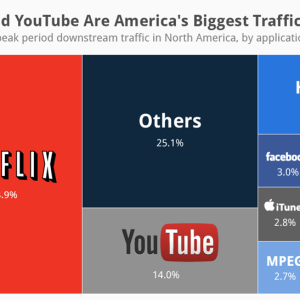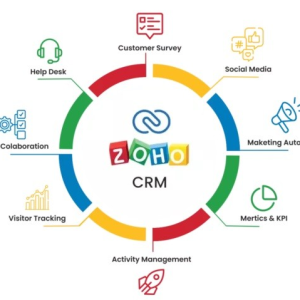Introduction
Many businesses have trouble with their website’s SEO or search engine optimization. Schema markup may be able to help. Schema markup is code that you can add to your website’s HTML that will help Google and other search engines better understand the content on your page.
49% of marketers report that organic search has the best ROI of any marketing channel
(Search Engine Journal)
By using schema markup, you can help ensure that your website’s content is properly indexed and ranked on search engine results pages. In this guide, we’ll show you how to use schema markup to improve your website’s SEO.
What Is Schema Markup?
Schema markup is a code that can be added to your website to help search engines better understand the content on your page. The code is typically added to the HTML of your website.
It is also sometimes referred to as structured data or microdata. It was introduced in 2011 by Google, Microsoft, Yahoo!, and Yandex.
The goal of schema markup is to help search engines better understand the content on your page and give them more information about your website. This can help your website’s content to be properly indexed and ranked on search results pages.
How Does Schema Markup Work?

Schema markup works by adding additional code to your website’s HTML. This code provides more information about the content on your page.
For example, let’s say you have a blog post about dogs. You could add schema markup to the HTML of that blog post to provide more information about dogs. This additional information could include the breed of the dog, the size of the dog, and the color of the dog.
By adding this additional information, you are helping search engines to better understand the content on your page. This can help your page to be properly indexed and ranked in search results pages.
Why Should You Use Schema Markup?

There are several reasons why you should use schema markup on your website.
1. It can help improve the visibility of your website on search engine results pages
By providing more information about the content on your page, you can help search engines to better understand your page and index it properly. This can help your page to rank higher in search results pages.
2. It can help improve the click-through rate of your website
When your website appears on a search engine results page, the listing will include more information about your website. This can help to attract more clicks to your website.
3. It can help improve the organic traffic of your website
By improving the visibility and click-through rate of your website, you can also help to increase the organic traffic of your website.
4. It can help you to stand out from your competitors
If your competitors are not using schema markup, then you can use it to help your website stand out from theirs.
5. It is easy to implement
Schema markup is relatively easy to implement. You can either add the code yourself or hire a developer to do it for you.
What Are The Benefits Of Using Schema Markup?
While markup can help improve the SEO of your website, it can also offer other benefits.
The benefits are not limited to SEO but can help your website in other ways:
1. Helps search engines understand your content better
Making sure that your website’s content is properly indexed and ranked in search engine results pages can help improve your website’s visibility and organic traffic.
2. Can improve click-through rates from SERPs
Since it can help search engines understand your content better, it can also improve your click-through rates from SERPs.
3. Can make your listings stand out more in SERPs
It can help your listings stand out more in SERPs by providing additional information about your website. This can help increase the chance that users will click on your listing.
4. Helps search engines return more relevant results for users
By helping search engines understand your content better, schema markup can help ensure that users are returned more relevant results for their queries. This can improve the overall user experience of your website.
5. Can improve voice search results
In addition to the SEO benefits, schema markup can also help with voice search. With the rise of voice assistants like Siri, Alexa, and Google Assistant, more and more people are using voice search to find the information they need. And since it can help provide more relevant results for voice search queries, it’s become even more important for website owners to use.
6. Helps with local SEO
Local SEO is another area where schema markup can help. If you have a local business, then you’ll want to make sure that your website is properly Optimized for local search. And since it can help improve the visibility of your listing in local search results
When it comes to SEO, schema markup can be extremely beneficial. While the benefits of using markups are numerous, these are a few things to keep in mind before implementing it on your website.
Different Types of Schema Markup By Technology

Google supports a wide variety of schema markup. However, there are a few types that are more commonly used than others. These include:
- JSON-LD
- Microdata
- RDFa
1. JSON-LD
JSON-LD is a type of schema markup that is written in JavaScript. It is a way to store structured data in JSON. The canonical format for Linked Data enables developers and publishers alike to access information that can be easily integrated into your website or application without any hassle! It is the recommended type of schema markup to use by Google and this schema markup allows you to take full control of your markup and ensure that the most important information about your website is properly conveyed to search engines.
2. Microdata
Microdata is a type of schema markup that uses HTML tags to annotate your content. This type is useful for marking up small pieces of information on your website. It is the key to making your content more engaging, creative, and memorable. Search engines can now understand not only what you’re saying but also how it’s said! This can be extremely beneficial for your website’s SEO.
3. RDFa
RDFa is a W3C Recommendation that adds a set of attribute-level extensions to HTML5, XHTML5, and various XML-based document types for expressing structured data in web documents. Using RDFa, you can express structured data more concisely and naturally. This can be extremely beneficial for your website’s SEO as it allows you to provide more information about your website in a more efficient manner.
Types Of Schema Markups by Type
Schema markup is an important part of SEO. By using it you can help improve several aspects of your website but first, let’s get down to business with a few of the most used schemas.
Product Schema:
Product schema is used to markup a product or service offered by a business on its website. This type of schema can be used on e-commerce websites, as well as websites that offer services. By using product schema, you can provide detailed information about your products or services, such as price, availability, and more.
Example of product schema:
<div itemscope itemtype=”http://schema.org/Product”>
<h1 itemprop=”name”>Shoes</h1>
<img src=”shoes.jpg” alt=”Shoes” itemprop=”image”/>
<p itemprop=”description”>A pair of shoes</p>
<p>Price: <span itemprop=”price”>$50</span></p>
<p>Availability: <span itemprop=”availability”>In stock</span></p>
</div>
This code when executed will result in the following:
- Shoes
- A pair of shoes
- $50
- In stock
As you can see, using product schema can be extremely beneficial as it allows you to provide detailed information about your products or services. This type of schema is especially useful for e-commerce websites as it can help improve your product listings on search engine results pages.
Organization Schema:
Organization schema is used to markup a business or organization on their website. This type of schema can be used on websites of all types, including businesses, nonprofits, schools, and more. By using organization schema, you can provide detailed information about your business or organization, such as name, logo, contact information, and more. This type of schema can be extremely beneficial for your website’s SEO as it can help improve your business or organization’s listing on search engine results pages.
Example of organization schema:
<div itemscope itemtype=”http://schema.org/Organization”>
<a href=”http://www.example.com/” itemprop=”url”>
<img src=”http://www.example.com/logo.png” alt=”Example Organization” itemprop=”logo”/>
</a>
<div itemprop=”name”>Example Organization</div>
<div itemprop=”description”>
We are an example organization that does things.
</div>
Contact Info:
<div itemprop=”address” itemscope itemtype=”http://schema.org/PostalAddress”>
<div itemprop=”streetAddress”>123 Example Street</div>
<div><span itemprop=”addressLocality”>City</span>, <span itemprop=”addressRegion”>State</span> <span itemprop=”postalCode”>12345</span></div>
</div>
Phone: <span itemprop=”telephone”>555-555-1212</span>
</div>
This code when executed will look like this:
- Example Organization
- We are an example organization that does things.
- Contact Info:
- 123 Example Street
- City, State 12345
- Phone: 555-555-1212
The more information we have about our company, the better chance that Google will show us as one of their top results when someone searches for what you do. This means improved SEO and increased visibility!
Review Schema:
Review schema is used to markup a review or rating of a product or service offered by a business on its website. This type of schema can be used on e-commerce websites, as well as websites that offer services. By using the review schema, you can provide detailed information about a product or service, such as the name of the product, the reviewer’s name, the rating, and a review.
Example of review schema:
<div itemscope itemtype=”http://schema.org/Review”>
<span itemprop=”name”>Product Name</span>
Reviewed by <span itemprop=”author”>Reviewer Name</span>
<span itemprop=”itemReviewed” itemscope itemtype=”http://schema.org/Thing”>
<span itemprop=”name”>Item Reviewed</span>
</span>
<span itemprop=”reviewRating” itemscope itemtype=”http://schema.org/Rating”>
<meta itemprop=”worstRating” content = “1”/>
<span itemprop=”ratingValue”>4</span>/
<span itemprop=”bestRating”>5</span>stars
</span>
<div itemprop=”description”>This is a review of the product.</div>
</div>
This code when executed will look like this:
- Product Name
- Reviewed by Reviewer Name
- Item Reviewed
- 4/5 stars
- This is a review of the product.
The benefits of using schema are endless. The ability to provide additional information about your products and services will help you rank higher in search engine results, which is especially important for e-commerce websites that rely on having quality listings.
Not only these but we have other types of Schema Markups such as FAQ Schema, Local Business Schema, Event Schema, Recipe Schema, and many more.
Google’s advice is to start with one type of schema and expand from there. It is better to have some schema rather than none at all.
How To Implement Schema Markup
There are a few different ways that you can implement schema markup on your website. The first way is to use the Google structured data markup helper. This is a tool that allows you to input information about your content and then generate the code for you. All you need to do is copy and paste the code into your website’s HTML.
The second way to implement schema markup is to use a plugin. If you are using WordPress, there are a few plugins that will allow you to add schema markup to your website without having to write any code. One of the most popular schema markup plugins is the All in One Schema.org Rich Snippets plugin. This plugin allows you to add schema markup to your content with just a few clicks.
The third way to implement schema markup is to manually add the code to your website’s HTML. This is the most difficult way to implement schema markup, but it also gives you the most control over what information is being added to your website. If you are comfortable writing code, then this may be the best option for you.
Regardless of which method you choose, adding schema markup to your website is a relatively easy process. And, most importantly, it can have a significant impact on your website’s SEO.
Using Google Tag Manager For Schema Markup
Google Tag Manager is a free tool that allows you to manage and deploy tags on your website. Tags are small pieces of code that are used to collect information about your website visitors. Google Tag Manager can be used for a variety of different tasks, including adding schema markup to your website.
Adding schema markup to your website using Google Tag Manager is a two-step process. First, you need to create a new tag. To do this, click on the “Tags” link in the left sidebar of your Google Tag Manager account. Then, click on the “New Tag” button.
In the “Tag Configuration” section, you will need to select the “Custom HTML” tag type. Then, you will need to enter the code for your schema markup in the HTML field. Be sure to replace the “ITEM REVIEWED” and “REVIEWER NAME” placeholder text with the actual information for your website.
Finally, in the “Triggering” section, you will need to select the “All Pages” trigger. This trigger will cause your tag to fire on all of the pages on your website.
Click the “Save” button to save your tag.
Now that you have created your schema markup tag, you need to deploy it on your website. To do this, click on the “Publish” button in the top right corner of your Google Tag Manager account. In the “Version Name” field, you can enter a name for your schema markup tag. Then, click on the “Publish” button.
Your schema markup tag is now live on your website!
Testing Your Schema Markup
It is important to test your schema markup to ensure that it is working properly. Google provides a Structured Data Testing Tool that allows you to enter a URL and see the structured data that is being used on that page. Simply enter the URL of a page on your website that is using schema markup and click on the “Test URL” button.
If your schema markup is working properly, you should see a list of the structured data items that are being used on that page. If your schema markup is not working properly, you will see an error message.
You can also use the Google Search Console to test your schema markup. To do this, simply enter the URL of a page on your website that is using schema markup and click on the “Fetch and Render” button.
Google will then fetch and render the page, and you will be able to see how Google sees your page. If your schema markup is working properly, you should see a “Valid” status next to the “Structured Data” section.
Troubleshooting Schema Markup Errors
If you see an error message when testing your schema markup, there are a few things you can do to try to fix the problem.
First, check the code for your markup tag. Make sure that all of the placeholder text has been replaced with actual information.
Next, check the page on your website where you are using schema markup. Make sure that the code for your schema markup tag is included on that page.
Finally, if you are still having trouble, you can try using a different method to add schema markup to your website. For example, if you are using Google Tag Manager, you could try adding your schema markup code directly to your website’s code.
Tips To Use Schema Markup For SEO
Now that you know how to use schema markup, here are a few tips to help you get the most out of this powerful SEO tool:
1. Keep your schema markup code up-to-date.
By keeping your schema markup code up-to-date, you can ensure that Google and other search engines always have the most accurate information about your website.
2. Include it in a video sitemap.
If you have a video sitemap, be sure to include your markup code in it. This will help Google index your videos and improve their ranking in search results pages.
3. Use multiple types of schema markup.
There are many different types of schema markup that you can use. By using multiple types of schema markup on your website, you can give Google more information about your website’s content.
4. Optimize your website for voice search.
More and more people are using voice search to find information online. By using schema markup, you can help ensure that your website’s content is properly indexed for voice search.
5. Using bio pages for authors.
If you have an author bio page on your website, you can use schema markup to help Google index that page and improve its ranking in search results pages.
6. Use it in conjunction with other SEO tools.
Schema markup is just one of many powerful SEO tools that you can use to improve your website’s ranking in search engine results pages. By using schema markup in conjunction with other SEO tools, you can give your website the best chance of success.
By following these tips, you can use schema markup to improve your website’s SEO and get more traffic from Google and other search engines.
Conclusion
This guide should have everything you need to get started using schema markup for SEO. It is a powerful tool that can help you improve your website’s search engine ranking. By adding it to your website, you can help Google and other search engines better understand your content and index your pages correctly.
If you need help getting started, 12 Channels can provide you with the resources and support you need to successfully implement schema markup on your website along with a whole range of other marketing services. Contact us today to learn more.


























2 thoughts on “An Easy Guide To Using Schema Markup For SEO”
Wow, this blogger is seriously impressive!
I appreciate your creativity and the effort you put into every post. Keep up the great work!